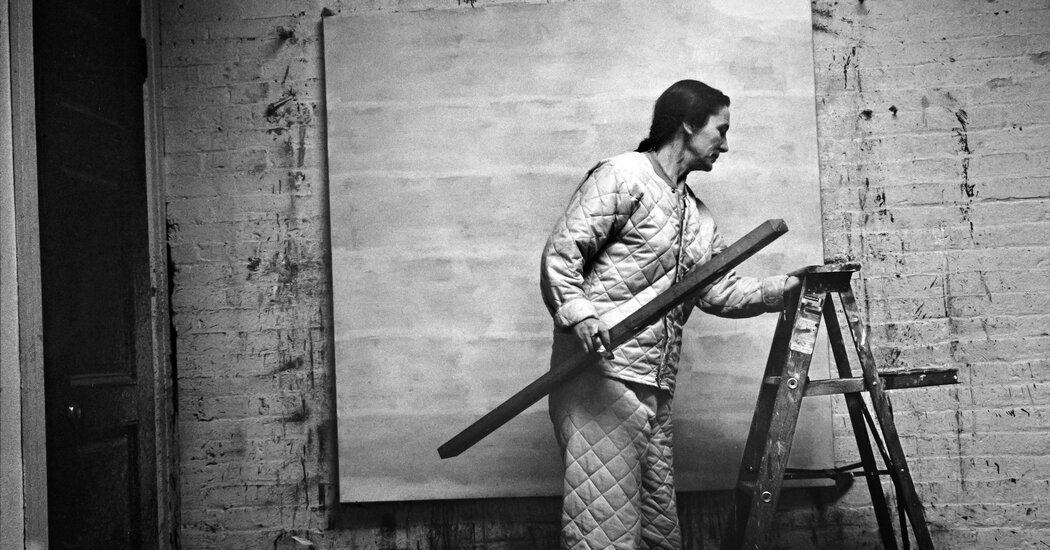Or does she? I ask because, in Peiffer’s telling, what moved these artists as much as their habitat was Barr’s challenge, which hung in the air for all newcomers, the conscious attempt to surpass the drippy abstractions of their forebears. (We learn that another upstart, the perfectionist Frank Stella, tacked a de Kooning reproduction in his studio as a reminder of “what I must not do.”) Between these two philosophies of the creative act — the intellectual and the environmental — Peiffer echoes a debate at least as old as her subject. What do painters paint? Must they study “the major art of the preceding period,” as Clement Greenberg demanded in 1955? Or must they listen to “the self and its relation to the surrounding world,” as Meyer Schapiro shot back in 1957? Did Kelly mean to renounce Kline’s sloshy “Orange Outline” (1955), or was he just tickled by that tangy, loud little citrus peel? Peiffer’s refusal to take sides is not necessarily a fault. It reflects the excitement of those years — and our debt to them.
Her ending is almost too neat. By 1964, the last of the artists’ shared buildings on the Slip had been condemned. (Of the full block, only No. 3-5 remains today, a building that at different times housed Kelly, Martin, Rosenquist, the fashion designer John Kloss and the painter Ann Wilson.) The careers took flight, but the commune dissolved. Tawney, middle-aged and alone, was expelled from yet another unzoned loft. After a loss in court, melancholy sank in: “Her living spaces were extensions of her work itself,” Peiffer explains. Here again, the city gets the last, ironic say. When David Rockefeller’s Chase headquarters colonized Pine Street, Youngerman was tapped to supply the bank with paintings. “I was a walking contradiction between my French leftist, pro-Cuban, downtown sensibility, and the new corporate architecture,” he confessed. When the developer and urban planner Robert Moses, the book’s villain, staged his reviled 1964 World’s Fair, Indiana, Kelly and Rosenquist exhibited there. Downtown’s earth-scorcher was now their biggest patron.
Up ahead lies the first World Trade Center, the corporate takeover of downtown, the artist exodus to SoHo, then to Brooklyn. These days, I learn, Coenties Slip is expecting a half-billion-dollar residential high rise complete with an indoor pool and “sports simulators.” I don’t mean to sound like a NIMBY, but if you wonder why art is migrating to the metaverse, Peiffer’s snapshot of this hinge decade in modern art history should be your first port of call.
Walker Mimms’s writing on art and culture appears in The Times, The Guardian, The New York Review of Books and elsewhere.
THE SLIP: The New York City Street That Changed American Art Forever | By Prudence Peiffer | Illustrated | 411 pp. | Harper | $38.99

